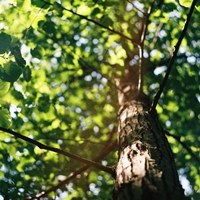(BRUSSELS) – The European Commission published guidelines Tuesday to support implementation of its ‘New Forest Strategy’ aimed at strengthening the protection, restoration and resilience of EU forests.
The guidelines on Biodiversity-Friendly Afforestation, Reforestation and Tree Planting provide a set of practical recommendations to support authorities, forest and landowners, and managers and civil society to better implement biodiversity-friendly afforestation, reforestation and tree-planting projects including at the local level.Specifically, they support the European Green Deal commitment to improve the forested area of the EU both in quantity and quality. Through both active planting and natural regeneration, these guidelines constitute one of the key milestones to implement the 3 billion additional trees pledge of the EU by 2030. They address afforestation initiatives in agricultural land; reforestation actions in forest land, including restoration actions; and tree planting in urban and peri-urban environments, as well as agricultural land (agroforestry).
“Today’s guidelines will help reach two key objectives,” said Environment Commissioner Virginijus Sinkevicius: “on the one hand, that we protect our primary and old-growth forests, of which so few remain in Europe, and on the other, that we increase the number and quality of forests by following the principle of ‘the right tree on the right place. Planting trees can strengthen a sense of community and will allow generations of Europeans to enjoy green legacies for years to come.”
The guidelines for Defining, Mapping, Monitoring and Strictly Protecting EU Primary and Old-Growth Forestsprovide practical guidance to national policy- and decision-makers that will allow them to effectively identify and protect remaining primary and old-growth forest in the EU. Indeed in the EU Biodiversity Strategy there is a commitment to strictly protect all remaining EU primary and old-growth forests. The guidelines thus set out criteria for identifying primary and old-growth forest areas based on a list of indicators or principles. A timeline is suggested for their mapping and strict protection.
Forests are rich in biodiversity and are hugely important in the fight against climate change. Primary and old-growth forests are some of the EU’s richest ecosystems. They store significant carbon stocks, and are of paramount importance for biodiversity and the provision of multiple ecosystem services. They provide a habitat for many of the EU’s endangered and endemic species and are also prime examples of our natural heritage. In the EU today, these forest areas are rare, often small, and fragmented. They only make up 3% of the EU’s total forested area and 1.2 % of the EU land. Their distribution is also uneven: 90% of these forests are located in Sweden, Bulgaria, Finland and Romania.
Guidelines on Biodiversity-friendly Afforestation, Reforestation and Tree Planting
Related strategies
New EU forest strategy for 2030
Documents
Staff Working Document on the 3 Billion Tree Planting Pledge for 2030



